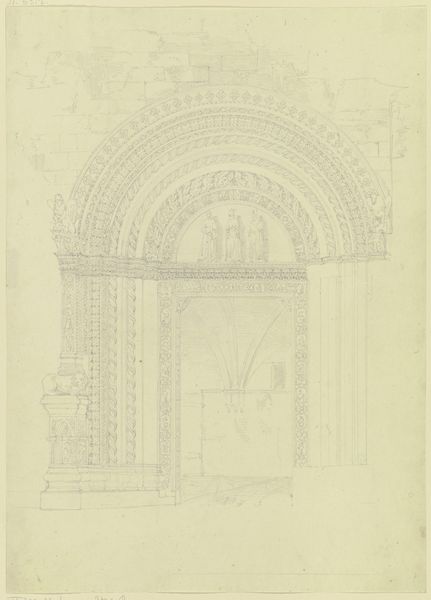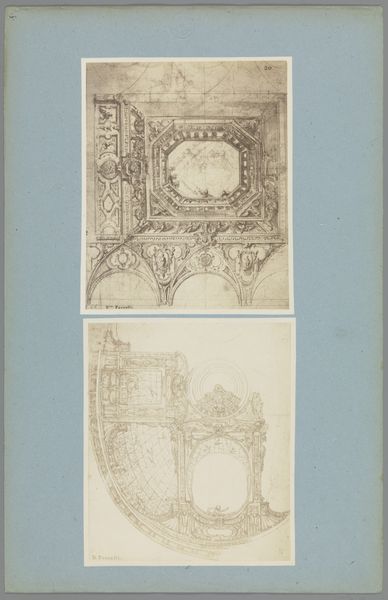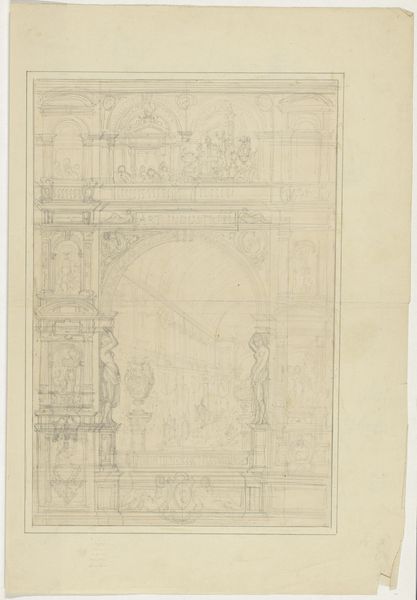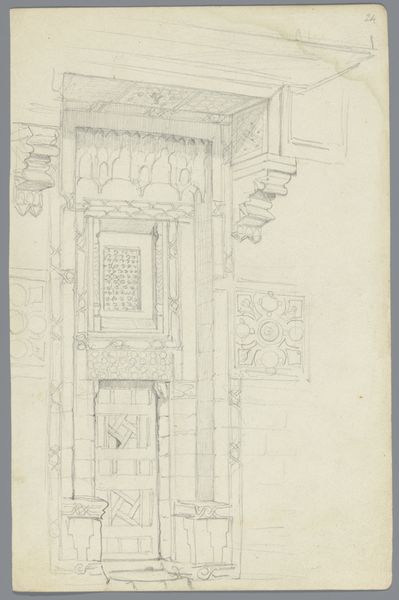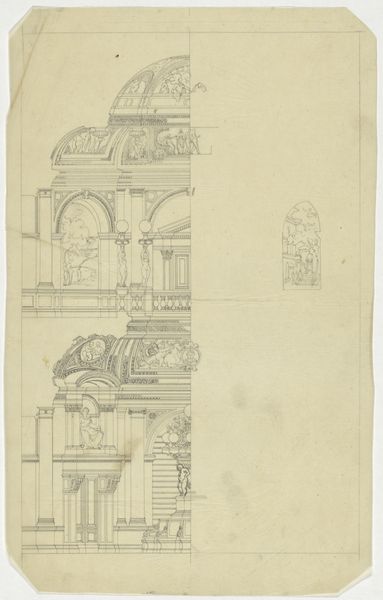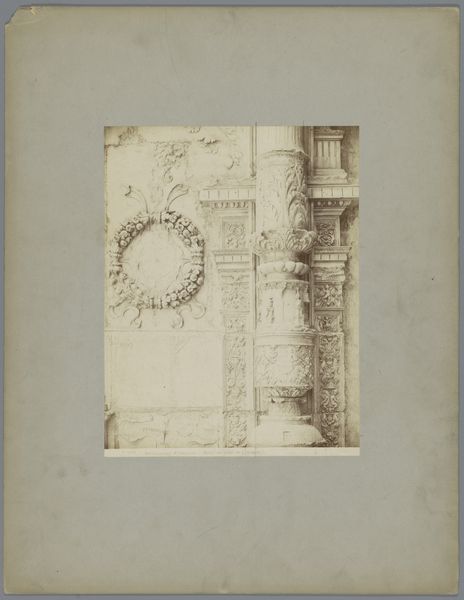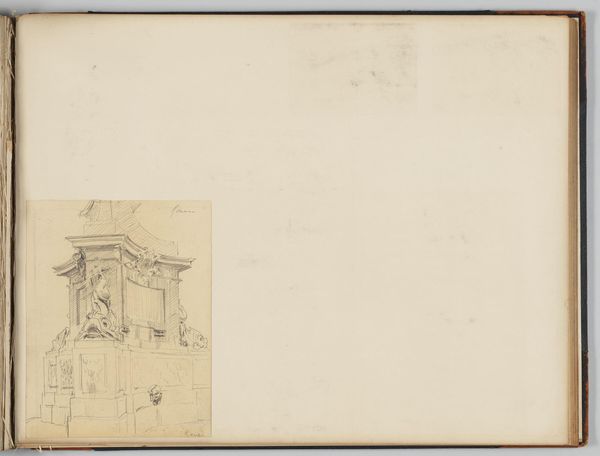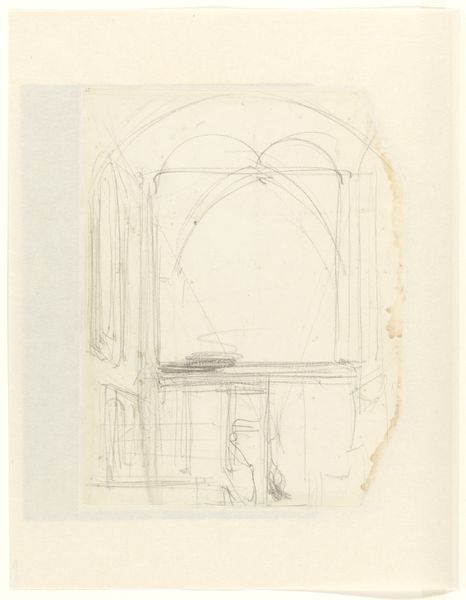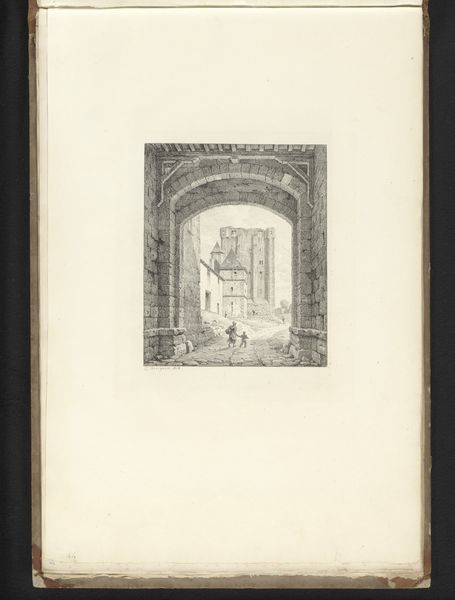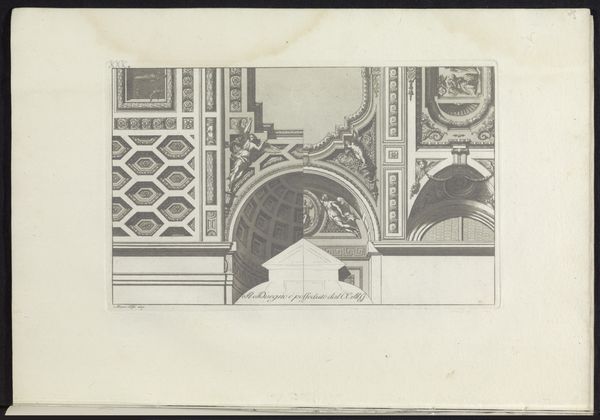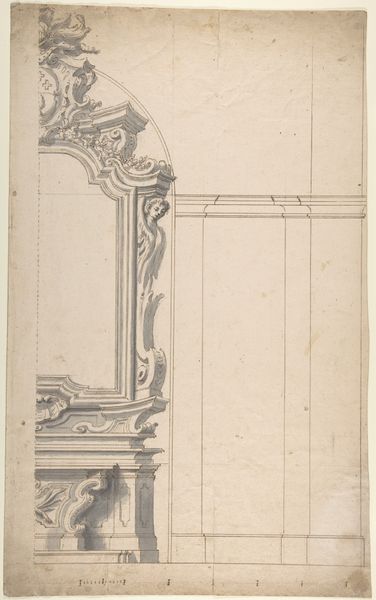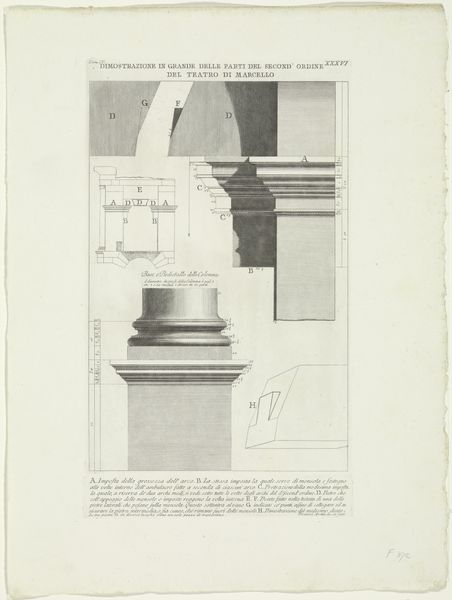
Fotoreproductie van een architectonische tekening van een gebouw met daarin de verhoudingen en formaten vermeld c. 1875 - 1900
0:00
0:00
Dimensions: height 270 mm, width 190 mm
Copyright: Rijks Museum: Open Domain
Curator: This architectural drawing, dating from around 1875 to 1900, offers a detailed look at neoclassicism through the eyes, or rather, the hand, of Jean Pierre Emanuel Lampué. What leaps out at you, would you say? Editor: Honestly, it feels unfinished, almost dreamlike. It’s as if a building is fading into existence—or maybe out of it. Like looking at blueprints that are actively deconstructing reality itself. Curator: Indeed, its linear precision is typical of academic art and yet it isn’t entirely there; it hovers in a realm of potential. There's a deliberate emphasis on form, geometric shapes and perspective, all hallmarks of neoclassicism’s fascination with classical architecture and design. Editor: Absolutely, it's all about line and structure. But that incompleteness adds a layer. The symbolism seems...open. Like it’s suggesting something about the nature of building, not just physically, but culturally too. Do these structures fully manifest, or are they always partly imaginary? Curator: That notion aligns well with neoclassicism, doesn't it? Seeking to recreate an idealized past, a visual metaphor for humanity's aspiration towards order, reason, and lasting monuments. Notice the careful depiction of proportions and dimensions—even the title tells us so. Every line conveys purpose. Editor: But within that control, there's this ghostly echo, you know? A hint of instability. Maybe it’s about time, about the tension between the grand ambition of architecture and the inevitable erosion, decay, or sheer…disappearance that comes with it? Curator: A compelling point. The work reminds us how visual language preserves ideals and transmits them across generations. The symbolism present extends beyond simple representation. The images almost perform cultural memory and aspiration. Editor: It also reflects a paradox within our minds. We long to materialize ideas, create solidity from abstraction, yet simultaneously grasp the fragility of creation and the fleeting nature of ideals. So, it evokes melancholy rather than triumph. Curator: A perspective worth embracing. Thank you. Editor: And thank you for unveiling its nuances; a joy, as always.
Comments
No comments
Be the first to comment and join the conversation on the ultimate creative platform.
